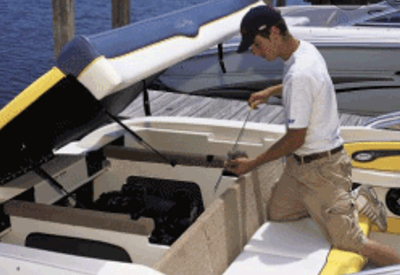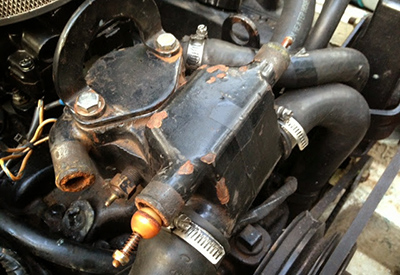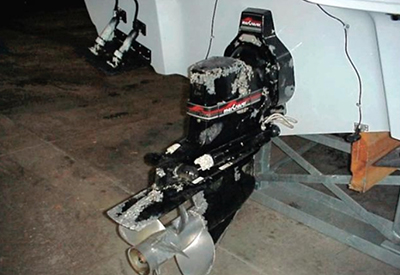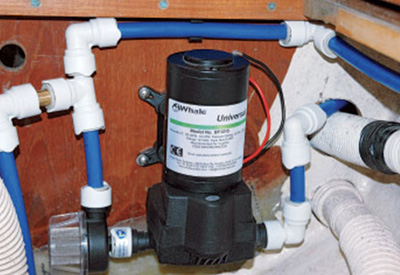Ask Andrew: Fall means haul-out and boat storage; I get a lot of questions about best-practices.

Oct 27, 2022
Boaters tend to be hands-on and active. Many (most?) like to launch and trailer our boats on our own. We are hands on during launch and haul-out… But boat yards and launch ramps also tend to contain a collection of ‘this is what I do’, and not always ‘this is ideal, and I do it for this reason’.
Unfortunately, I’ve yet to find a manual that contains all things boating: How to launch, trailer, winterize, store, cradle, crane, lift and haul. But these are activities that we, as boaters, take part in regularly. Here’s my short list from the ‘Winter Storage’ chapter, from that imaginary manual:
1) Lifting, blocking and cradling
a. Marinas and yacht clubs use either a travellift or a crane utilizing slings that fit beneath a vessel. This set-up ensures that pressure is exerted evenly along the curvature of the hull. Two prime concerns: First, that the slings aren’t allowed to move or slip fore or aft off of the bow or transom. This is usually achieved by running a line fore-aft between the two slings. The second concern is where the sling actually sits and exerts pressure on the hull: The slings should be positioned so that they are backed by bulkheads, but also so that the underwater machinery, transducers and through-hulls.
b. Once the boat is lifted out of the water, it will be rested on blocks on land. There are a few important concerns in terms of positioning:
i. That the boat rests along the keel. The support blocks, or cradle pads are not meant to support the boat – rather they are meant to keep the boat level.
ii. The boat should be level, or positioned in a way to allow water to drain (typically, slightly bow-up)
iii. When blocks or stands are set up on ground that may become soft, plates or sheets of wood should be used under thee stands, blocks or cradle to prevent sinking in the spring thaw
iv. The boat should be stable in it’s position: allowing you to safely board, and preventing any concern of shifting or tipping in high winds or
with heavy weight of snow.
v. Keep interior weight to a minimum: remove any excess weight or gear, and ensure that water and snow can’t be trapped inside
ensure that the boat is aligned well on the trailer’s bunks and rollers before the final haul-out of the season
2) Trailering and trailer maintenance
Similar to the positioning and support of boats that are blocked or cradled, the trailer rollers or bunks rest on chines, keel and bulkheads.
Trailers are in and out of weather through the boating season. Often they are left in open areas where sun, heat and rain will slowly break down all parts. They can often be backing into the water and pulled back out with regularity. At season’s end, make sure that any trapped water is allowed to drain from the trailer. Confirm that water is pressed from the wheel bearings by adding grease. Ensure that tires are inflated, and that wheels and tires are supported and blocked for the winter. Ensure that the drain plug is removed and that the boat is positioned on the trailer in a way that allows water to drain.
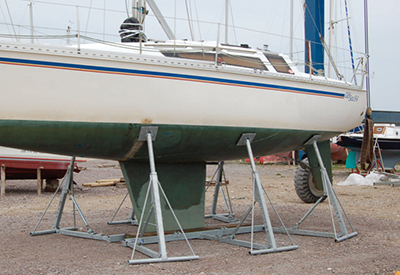 this boat is set up with 6 support pads – this provides ideal weight distribution
this boat is set up with 6 support pads – this provides ideal weight distribution
Drives and outboards
Drives and outboards are billed as ‘self-draining’ – which is true, as long as the drive or outboard leg is vertical or at a negative angle. Ideally, the boat will be moved and set with the engine or drive trimmed up (preventing damage), but once in it’s ideal resting position for winter, the drive or outboard will be lowered to ensure that water is allowed to completely drain, and not collect any further.
3) Batteries
There are many schools of thought when it comes to batteries. Any discussion tends to lead to lots of debate: Remove batteries? Leave them aboard? Leave them connected? Trickle charge? Keep them in a warm location?
There are two major concerns that don’t bear debate:
a) That the battery is fully charged before stored for winter. When in a charged state, the battery wont freeze. When partially or fully discharged, the battery can be damaged over long-term storage.
b) That the battery is disconnected, and prevented from accidental discharge. Batteries can be disconnected completely, or by removing the negative (black/yellow) leads from the battery.
4) Covers, tarps and ventilation
Whichever method you use to cover (or not), tarp, shrink-wrap or otherwise protect your boat for winter, the important part is this: To keep rain and snow out (which causes two problems: Added weight, and damage through water intrusion, and freezing expansion).
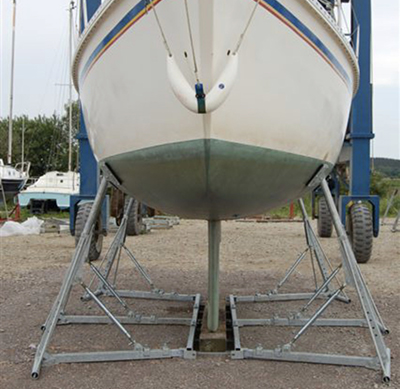 note the keel resting on blocks: the majority of the boat’s weight should rest on the keel block
note the keel resting on blocks: the majority of the boat’s weight should rest on the keel block
5) Drainage
Ensure that all bilge plugs, transom plugs, garboard plugs and livewell plugs are removed and that any water is allowed to move freely and drain appropriately. There’s risk in any type of tarp or cover, so minimize that risk by providing an exit path for any water.
Planning and implementing good practices can allow you to easily close out 2022, and will add to your enjoyment in 2023. Enjoy haul out!
 Andrew McDonald is the owner of Lakeside Marine Services – a boat repair/maintenance firm based in Toronto. Andrew has worked in the marine industry for 12 years and is a graduate of the Georgian College ‘Mechanical Techniques – Marine Engine Mechanic’ program.
Andrew McDonald is the owner of Lakeside Marine Services – a boat repair/maintenance firm based in Toronto. Andrew has worked in the marine industry for 12 years and is a graduate of the Georgian College ‘Mechanical Techniques – Marine Engine Mechanic’ program.
Questions or comments for Andrew? Email him directly via: askandrew@lakesidemarineservices.ca


